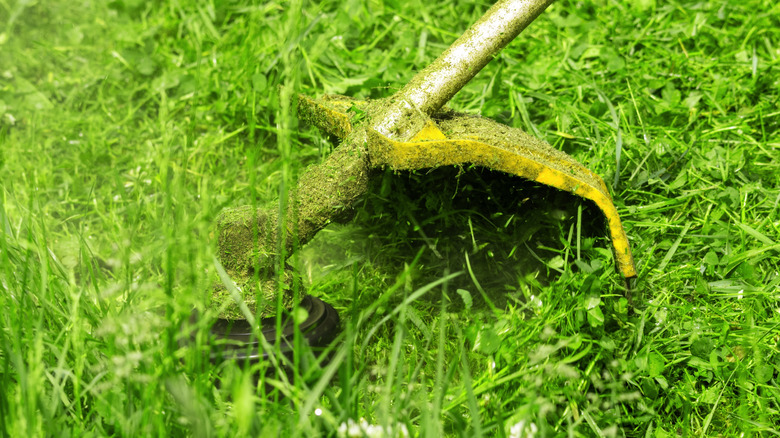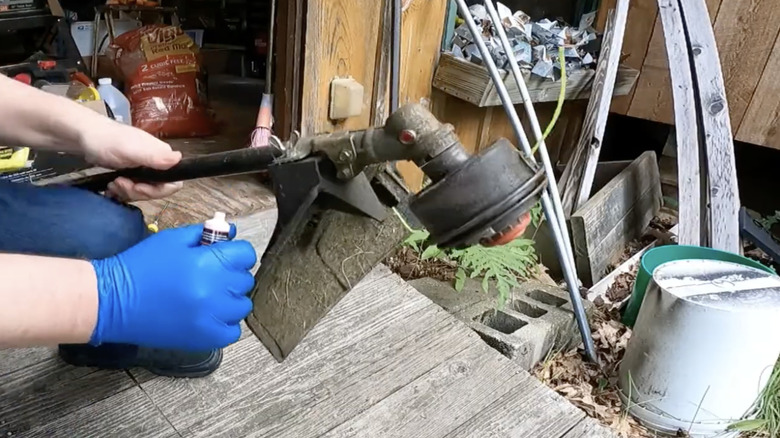When To Apply Lubrication To Your Ryobi String Trimmer (And Why You Should)
String trimmers are an effective way to trim weeds and grass in awkward areas where deck mowers can't reach. They're perfect for working around trees or buildings, cleaning up garden borders, or taking out tall grass that might choke even the best lawnmowers. Ryobi is one of the major power tool brands that offers a selection of string trimmers; its 15-inch model made our list of essential Ryobi tools every homeowner will want and Ryobi's carbon-fiber 40V trimmer is one of 2025's best string trimmers. Ryobi currently offers more than 40 electric or gas-powered string trimmers, all of which require regular maintenance for proper operation and long life.
This means keeping the vents and shaft clear of clippings, regularly checking and replacing the line spool, and making sure moving parts are properly lubricated. Some of Ryobi's more affordable trimmers don't have a way to apply grease to the bearings, so check your owner's manual to see if it's required for your model. If your trimmer is greaseable, it's a good idea to do it once a year at the beginning or end of the season. You'll also want to apply a fresh bit of grease if the shaft or cutting head starts to emit vibrations or unusual noises. And if you're putting your trimmer into long-term storage, lubricating it beforehand helps ensure it works correctly when you need it again.
What happens if you don't lubricate your string trimmer?
Ryobi string trimmers are generally regarded as low-maintenance tools, requiring little more than attention to the line spool and some regular cleaning. But beyond that, moving parts in the shaft require lubrication to prevent excessive wear and premature failure. When the grease that was installed at the factory breaks down, the moving parts in your Ryobi trimmer will grind against each other. The added friction will make noise, compromise the effectiveness of the trimmer, and generate excess heat.
Eventually the bearings will seize, forcing you to repair or replace your trimmer. Greasing the trimmer now and then maintains the protective layer between moving parts and protects them from rust. Before lubricating your string trimmer, let it cool completely and give it a thorough cleaning. You should use a dry cloth or stiff nylon brush to clean the shaft, guard, and handles; water and other liquids can get in the vents and damage vital components.
How to properly lubricate your Ryobi string trimmer
Many Ryobi trimmers have a small grease fitting near the head that is capped with a screw. Check your manual for grease recommendations, but Greenstar Tecomec grease is made of molybdenum bisulfide and is effective for lubricating trimmer bearings.
LIthium or silicone-based lubricants are also cheap, effective, and available at most hardware and auto supply retailers. To grease your trimmer, first remove the fitting screw and put it in a safe place. Next, uncap the tube of grease, break the foil seal, and screw the tube into the fitting a turn or two short of being fully seated. Gently squeeze the tube until grease oozes out around the threads, then remove the tube and replace the screw. Wipe away any excess grease, make sure the screw is tightly seated, and give your trimmer a quick test run to distribute the grease and ensure everything spins smoothly.


